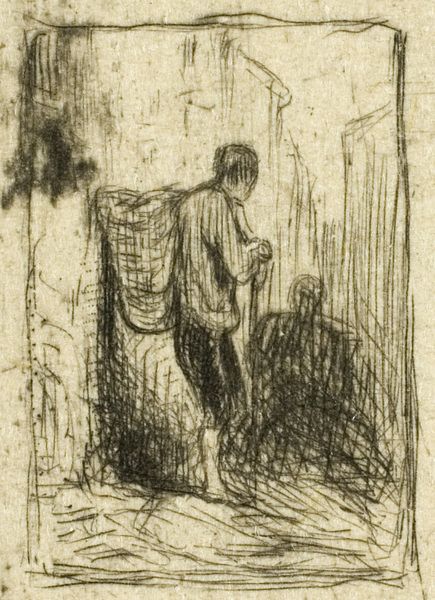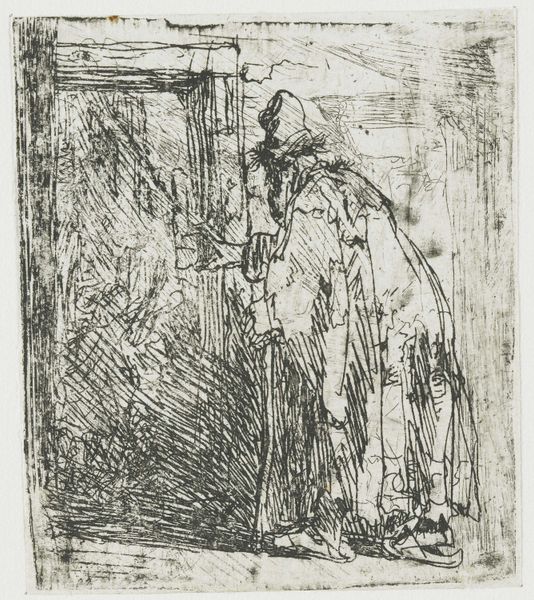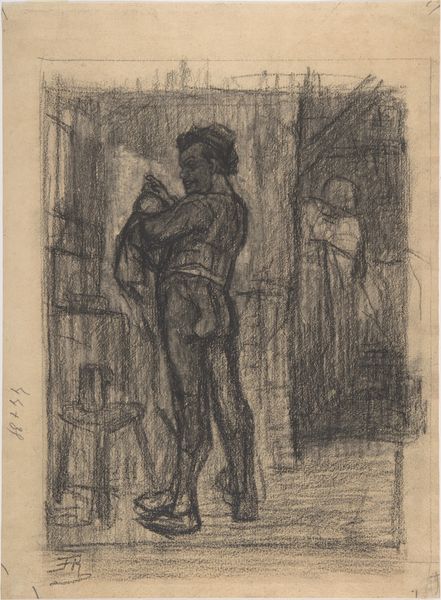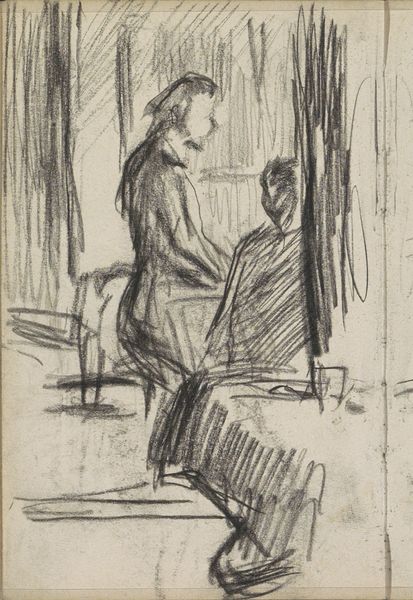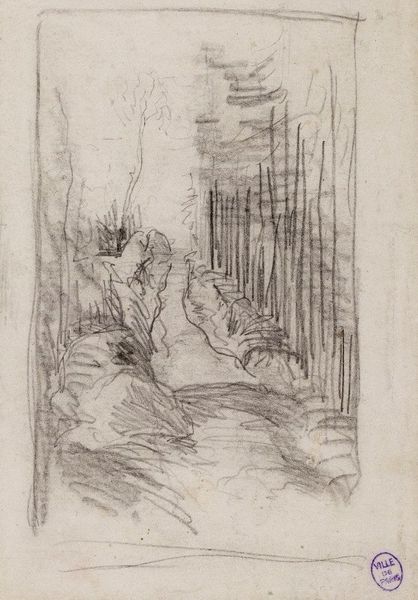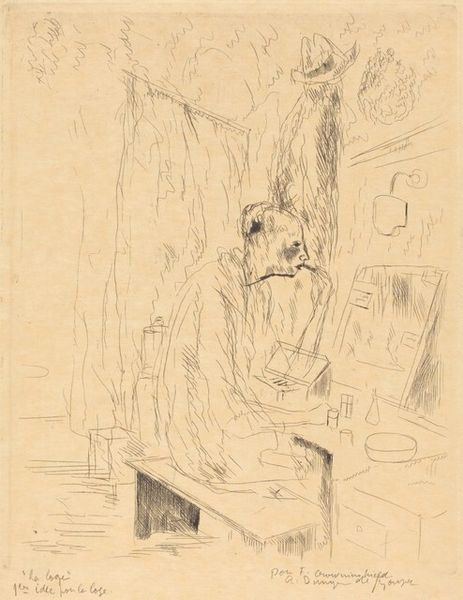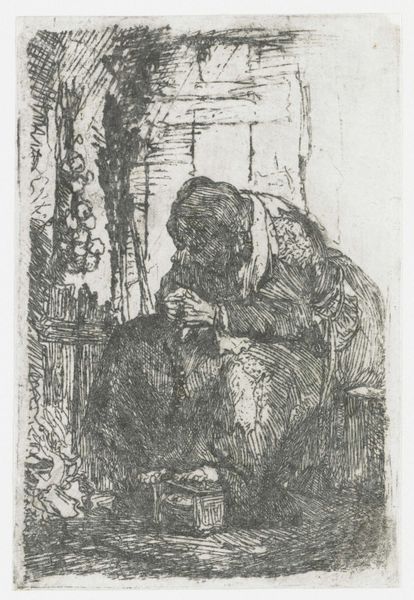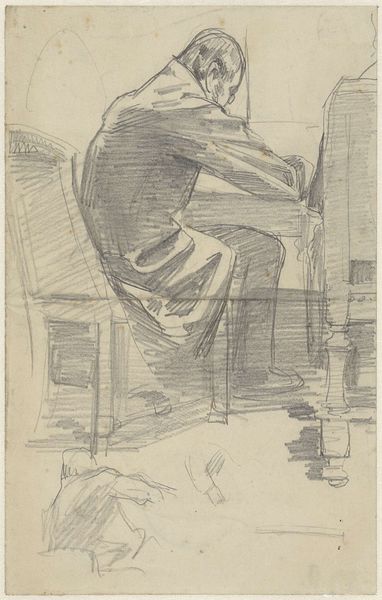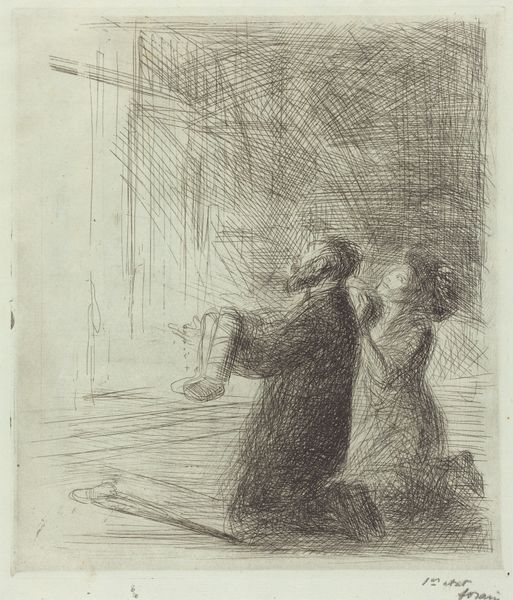
drawing, print, etching, paper
#
drawing
#
narrative-art
# print
#
etching
#
figuration
#
paper
#
underpainting
Dimensions: 19 × 14 mm
Copyright: Public Domain
Curator: Charles Jacque’s print, “Ragman,” presents us with a somber, albeit intimate, encounter. It is an etching on paper currently held in the Art Institute of Chicago. Editor: There's a ghostly feel to this image. It feels like I am intruding on a moment. Two figures caught in a flurry of lines, huddled together, nearly dissolving into the surrounding darkness. It reminds me of when a memory is slowly fading, just bits and pieces left. Curator: Right, the etching technique lends itself well to that sense of fading, actually. Prints such as this circulated widely and allowed for art to reach broad audiences. This scene of the ragman touches on common themes of poverty and the everyday struggle for survival. The ragman and his companion symbolize the plight of the disenfranchised and the working poor. Editor: Definitely captures a melancholic mood; these rough, expressive lines do a great job showing the weight of hardship. They appear vulnerable, like secrets whispered in the dead of night, when, honestly, isn't that what it feels like when so many go without. Curator: What I find compelling is how Jacque avoids overt sentimentality. He captures the everyday struggles of these figures. And even if their life seems poor or simple to us, perhaps there is some intimacy to be found in this life, a social bond, maybe the one that matters in these harsh circumstances. Editor: It is a stark reminder, though, how so much artwork romanticizes these hardships without acknowledging how unfair things really are. This artist managed to convey vulnerability without slipping into romanticization or seeming to patronize these people. A tricky balance to get right, but somehow Jacque pulls it off. The ambiguity invites us to consider our own responses, our own responsibilities to folks struggling at that point. It’s thought-provoking. Curator: Indeed. It compels one to question the romantic vision often given to labor and to ponder upon the conditions and the value, or the devaluation, of certain work and certain groups in 19th century France, where economic inequality was becoming increasingly visible. Editor: Well, as with any evocative piece, it hits you and it keeps going long after.
Comments
No comments
Be the first to comment and join the conversation on the ultimate creative platform.
